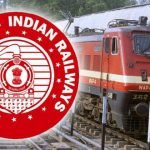समान रैंक, समान पेंशन
One Rank One Pension Scheme is the new pension scheme for the Indian Armed Forces and Veterans. It was announced by the Government of India on 5 September 2015, after a protracted nationwide protest by armed forces veterans. The implementation tables of the scheme were issued in February 2016. One Rank One Pension scheme has been one of the long-standing demands from the Armed Forces Veterans since years. The most widely accepted definition of OROP after several deliberations was to provide the same amount of pension to retired military personnel irrespective of the year of retirement provided that they meet two conditions such as they should have the same rank while retiring and they should have rendered same years of service in the armed forces. Under OROP, a sepoy who retired in 1995, for instance, would get the same amount of pension as the one who retired in 1996. The government announced the budget of Rs. 1000 crore for One Rank One Pension
Benefits of One Rank One Pension (OROP):
- Ex-servicemen drawing pensions will benefit from the OROP scheme, especially those who retired before 2006
What is One Rank One Pension (OROP)?
- One Rank One Pension scheme has been one of the long-standing demands from the Armed Forces Veterans since years. The most widely accepted definition of OROP after several deliberations was to provide the same amount of pension to retired military personnel irrespective of the year of retirement provided that they meet following two conditions:
- They should have the same rank while retiring
- They should have rendered same years of service in the armed forces
The main Features of One Rank One Pension:
- The scheme is effective from July 1, 2014, with 2013 as the base year. The veterans wanted OROP from April 1, 2014 and 2015 as the base year
- Around three million military personnel covered under the OROP scheme. The arrears are to be paid in four half-yearly installments and all windows, including war widows, will get arrears in one go. The first installment has been paid and secondly is on the way
- The estimated cost to the exchequer is expected to be Rs. 8,000 to 10,000 crore and will increase in future
- The government has proposed a review every five years. The veterans want an annual review. Their contention is that a senior officer can never receive a smaller pension than a junior officer
- The government initially said soldiers who took “voluntary retirement” would not be entitled to OROP. This hit a raw nerve as at least 40% of servicemen retire early
Why is One Rank One Pension required?
- If we take a look at the civilian employees, it is noticed that they retire at the age of 60. However, in the scenario of Military employees, the retirement age is very less. So, the family responsibility for such army military personnel becomes a matter of concern and the 2nd career option is not very easy
- Sepoys in Military retire at 35-38 years while non-commissioned officers (NCO) & junior commissioned officer (JCOs) retire at 40 to 45. Only 10 percent of Sepoys make it to the rank of JCOs
- Most of the Officers retire in Early 50’s
- If you know any army personnel, you will surely agree that military service is much tougher than any other job
- Military personnel is posted to different areas from time to time and most of the places where they are posted to are risky for their lives. In other words – They keep their lives at stake
- Also, there has been a gap of pension amount due to successive pay commission
References & Details:
- For more details about One Rank One Pension (OROP) Scheme visit: http://www.desw.gov.in/orop
- One Rank One Pension (OROP) Scheme pdf download: http://www.desw.gov.in/sites/default/files/2016.02.03-OROP1.pdf
- Ministry of Defense visit: http://www.mod.nic.in/




